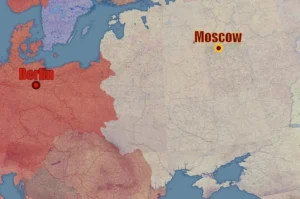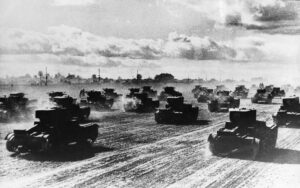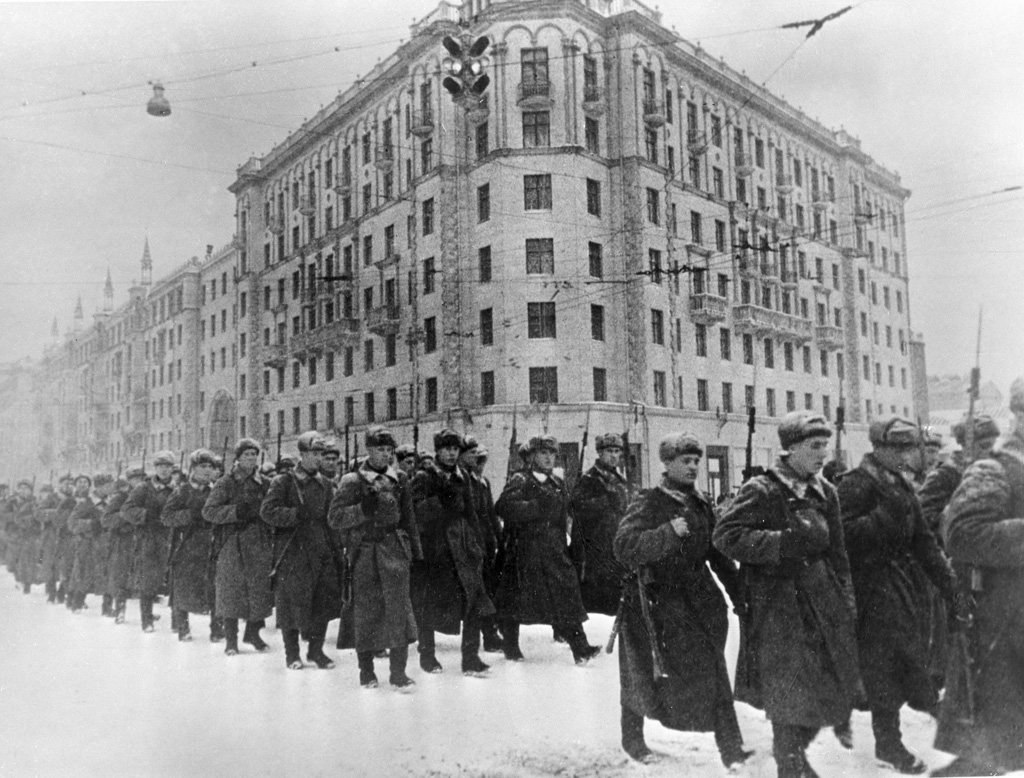Vaša košarica je trenutno prazna!
Launched on June 22, 1941, Operation Barbarossa was not merely a military offensive; it was a colossal, ideological war of annihilation that irrevocably shaped World War II and fundamentally altered 20th-century history. Hitler’s audacious plan to invade the Soviet Union, shattering the fragile Molotov-Ribbentrop Pact, aimed to achieve far more than territorial conquest. His vision was the complete destruction of Soviet communism, the extermination of Jewish populations, and the brutal acquisition of vast “Lebensraum” (living space) for a new Aryan empire extending deep into Russia. This single, desperate gamble ultimately sealed the fate of Nazi Germany.
Unprecedented Scale: The Largest Invasion in History

The sheer magnitude of Operation Barbarossa was, and remains, unparalleled. Over 3.8 million Axis soldiers, drawn from Germany, Romania, Hungary, Italy, and Finland, were unleashed across a staggering 2,900-kilometer (1,800-mile) front, stretching from the Arctic Circle to the Black Sea. This monumental force was supported by approximately 3,500 tanks, 7,000 artillery pieces, and 2,700 aircraft, forming the largest invasion force ever assembled. Despite numerous intelligence warnings, Soviet dictator Joseph Stalin notoriously dismissed the threat, leaving the Red Army catastrophically unprepared. The initial onslaught, executed with devastating German blitzkrieg tactics, achieved stunning early successes, pushing deep into Soviet territory and encircling millions of Soviet troops in massive Kesselschlachten (cauldron battles).
Brutal Advance: Triumph Masking Annihilation

In the opening months, the Wehrmacht’s advance appeared unstoppable. German forces swiftly captured immense swathes of land, inflicted millions of casualties on the reeling Red Army, and seized vital industrial and agricultural regions. Major cities like Kyiv and Minsk quickly fell, while Leningrad endured a brutal, protracted siege that would claim millions of lives. However, these rapid territorial gains concealed a horrifying reality: Barbarossa was a war of unprecedented brutality and ethnic cleansing. German forces, particularly the infamous SS Einsatzgruppen, systematically carried out mass murders of Jews, communists, Roma, and other “undesirables” in occupied territories. This ruthless genocidal policy intensified the horrors of the Holocaust to an industrial scale and fueled a desperate, unyielding resistance among the Soviet population. The unimaginable atrocities solidified Soviet resolve, turning the fight into an existential struggle.
The Turning Point: Moscow, Winter, and Soviet Resilience

Despite their initial overwhelming successes, the German offensive began to falter. The sheer vastness of the Soviet Union, coupled with its underdeveloped infrastructure and the strain on German logistics, stretched the Wehrmacht’s capabilities to their breaking point. As autumn descended, the infamous Russian “General Winter” arrived with a vengeance. Brutally cold temperatures, heavy snows, and frozen equipment crippled the ill-equipped German army, which lacked proper winter gear and lubricants for their machinery. The crucial final push towards Moscow, code-named Operation Typhoon, stalled at the city’s very gates in December 1941. Exhausted German troops faced fierce Soviet counterattacks, often spearheaded by fresh Siberian divisions. The stunning failure to capture Moscow, Hitler’s primary strategic objective, represented the first major setback for the Wehrmacht and shattered the myth of German invincibility.
Lasting Legacy: The Eastern Front and the Cold War
The ultimate failure of Operation Barbarossa to achieve a swift victory irrevocably transformed the nature of World War II. It condemned Germany to a devastating two-front war, forcing the vast majority of its military resources and manpower to be committed to the brutal Eastern Front, where the overwhelming majority of German casualties were sustained. The immense human cost—tens of millions killed—made the Eastern Front the deadliest theater of the war. Barbarossa not only ensured the eventual defeat of Nazi Germany but also profoundly shaped the post-war geopolitical landscape. It led directly to the Soviet Union’s emergence as a global superpower, setting the stage for the ideological confrontation of the Cold War. The unparalleled human tragedy, the genocidal ferocity, and the far-reaching strategic consequences of Operation Barbarossa continue to resonate, serving as a chilling reminder of the devastating impact of unchecked ambition and hatred on a global scale.

